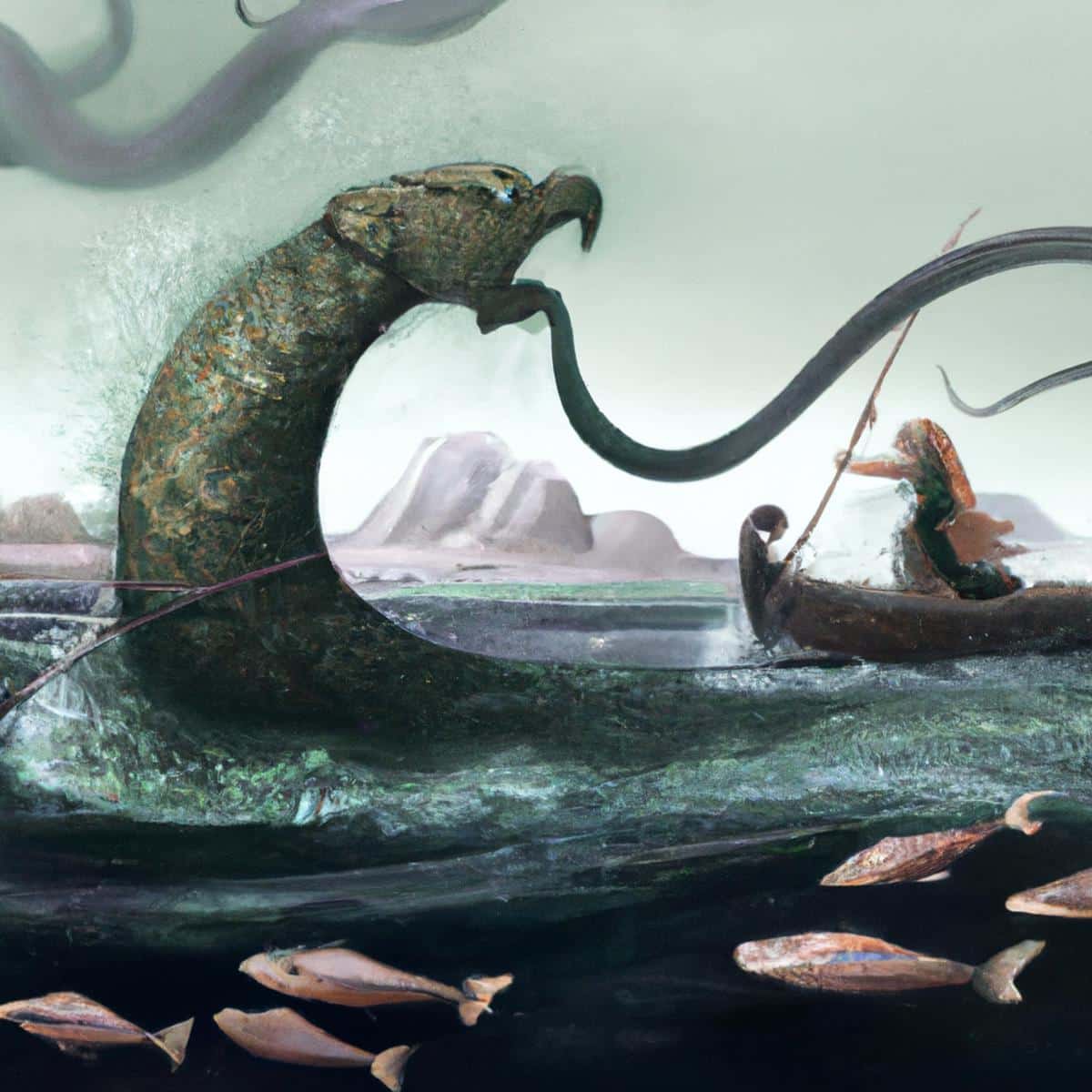
Snake Fishing is an ancient fishing practice that dates back to prehistoric times. It is practiced in many parts of the world, but is most common in South Asia and the South Pacific. This form of fishing is carried out with a harpoon or a gaff, and is used to catch large fish such as sharks, rays, and sea snakes.
Snake Fishing is an extremely dangerous sport due to the fact that fishermen are exposed to the possibility of being attacked by sea snakes. Sea snakes are venomous and aggressive creatures that can cause serious damage if attacked or injured. Therefore, anglers should take extra precautions when practicing this sport to avoid any injury or poisoning.
In addition to the inherent risk in practicing this sport, there are other important factors to consider before embarking on a Snake Fishing trip. Equipment needed includes heavy-duty harpoons, heavy-duty nets, and gear suitable for navigating deep, rough water where sea snakes live. It is also important to have enough fuel for the trip as sailing at night is prohibited due to the potentially dangerous risk involved.
Finally, Snake Fishing requires a lot of previous training since fishermen must be prepared to maneuver their boats correctly when they are close to areas where sea snakes live as well as learn about their naturalistic habits and behaviors underwater.
Summary
Snake fishing is an ancient practice that dates back to Norse mythology and culture. This practice dates back to the times of the ancient Vikings, who used these techniques to catch large and exotic fish. Snake fishing consists of joining several lines with a hook to form a circle around the target, as if it were a magic circle. The goal is for the fish to enter the circle, where it will be caught on the hook. This technique was developed by the Vikings to obtain large fish such as trout, salmon and cod.
The Vikings believed that this practice had magical powers, as it allowed them to catch larger and more exotic fish. They were convinced that their success depended on a correctly performed ritual before starting the fishing. For example, it was important to offer sacrifices to the Norse gods before starting the activity to obtain their blessing. In addition, they had to use tools specially designed for this purpose, such as reeds made with flexible twigs or circularly carved bones to represent the sea devil (the "Kraken").
Although this technique is not widely practiced today due to government regulations on the conservation of fishery resources, it is still an important part of our Norse culture and mythology. The stories about this practice continue to this day thanks to the stories told by past generations about the success achieved through these ancient techniques.
Main characters
Serpent fishing is an ancient practice in Norse mythology and culture, dating back to the early days of the Middle Ages. This activity was carried out to obtain food, such as salmon, but also to obtain a very precious material: the scales of sea serpents. These scales were used as currency and as ornamental objects.
In Norse mythology, the god Thor was known for his skill in catching sea serpents. It is said that Thor could control these creatures with his hammer Mjölnir and attract them towards him in order to capture them. This ability was transmitted to humans through folklore, which allowed many men to practice this activity for centuries.
The traditional technique used to fish for sea snakes was to build a bow out of a waterproof cable and tie it to a long pole or rod. The end of the cable was wrapped around the pole to create a large loop in the water where sea serpents could be trapped as they passed by. The archers then had to stay alert and ready to shoot when they saw the creatures approaching the lasso. Once trapped, the archers had to quickly pull them out of the water before they managed to break free or disappear under the water.
Although it is not as common today as it was in the past, there are still people interested in practicing this type of traditional fishing using tools similar to those used by Thor thousands of years ago. It is considered an extremely dangerous sport due to the unpredictable and inclusive behavior of these marine creatures; however, it remains very popular with those brave enough to give it a try.
intervening gods
Snake fishing is an ancient practice in Norse mythology and culture, dating back to Viking times. This is a ritual in which bait is thrown into the water to attract a sea serpent. The goal of the ritual is to capture the snake and bring it to the mainland to make sacrifices and offerings to the Norse gods.
The fishing of the serpent was considered a sacred act among the Vikings, since it represented the triumph over the primordial chaos. This meant that those who managed to capture her were regarded as heroes for their exploits. The Norse gods associated with this practice are Loki, Freyr, and Thor. According to Norse mythology, these gods had the power to control the forces of primordial chaos represented by the great sea serpents.
Regarding the fishing process itself, several elements were needed to carry it out correctly: A boat with adequate sails to withstand the wind and waves; nets specially designed to catch large snakes; primers bewitched with magic; and even weapons such as bows and arrows or swords to defend themselves in case of encountering resistance from the captured animal.
Once the snake was captured, it was taken to the mainland where sacrifices were made in its honor as an offering to the aforementioned Norse gods. These offerings were generally enchanted with ancient magic to guarantee good weather throughout the sea voyage to their final destination: Asgard (the heavenly home).
In summary, The Fishing of the Serpent was a very important ritual among the Vikings since it allowed them to control the forces of primordial chaos represented by these great marine creatures through sacrifices enchanted with ancient magic directed towards the Norse gods associated with this activity: Loki, Freyr and thor
Main topics covered
Snake fishing is an ancient Norse tradition dating back to the Iron Age. This practice was carried out in the lakes and rivers of northern Europe, where fishermen tried to catch a snake with their bare hands. This was done to obtain food, medicine or even to use it as a pet.
In Norse mythology, catching a snake was considered a brave and heroic act. Success in this task was believed to depend on the fisherman's courage and skill, as well as his relationship with the Norse gods. Legend has it that the god Thor was able to catch Jörmungandr, the great sea dragon, with his bare hands while they were in a lake near Mount Hlidskjalf.
Although this practice is no longer as common today due to modern technological advancement, there are still many people who practice snake fishing as part of their ancestral culture. These people use traditional techniques to capture snakes without harming or killing them; for example, using nets or traps made from natural materials such as twigs or roots. In addition, there are those who use modernized tools to help them in their search; For example, baskets specially designed to transport captured snakes without hurting or killing them.
Serpent fishing remains an important theme within Norse folklore and is seen by many as an intellectually and spiritually rewarding pursuit that allows them to make direct contact with the Old Gods and learn more deeply about them through this ancient ritual.



